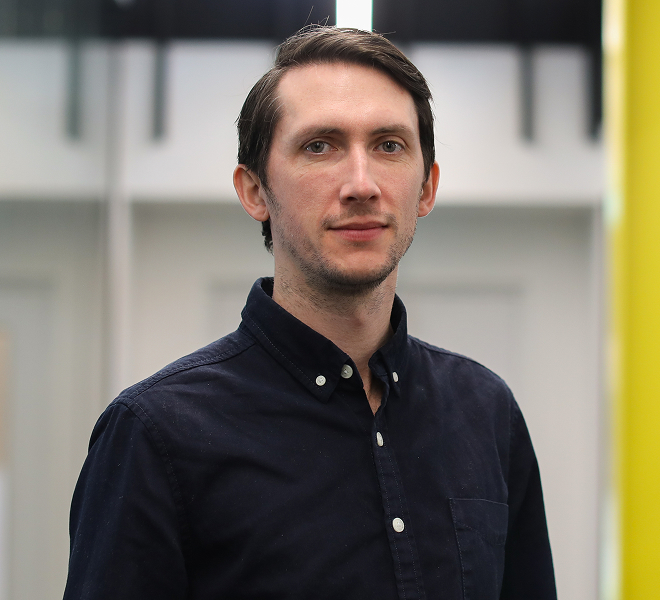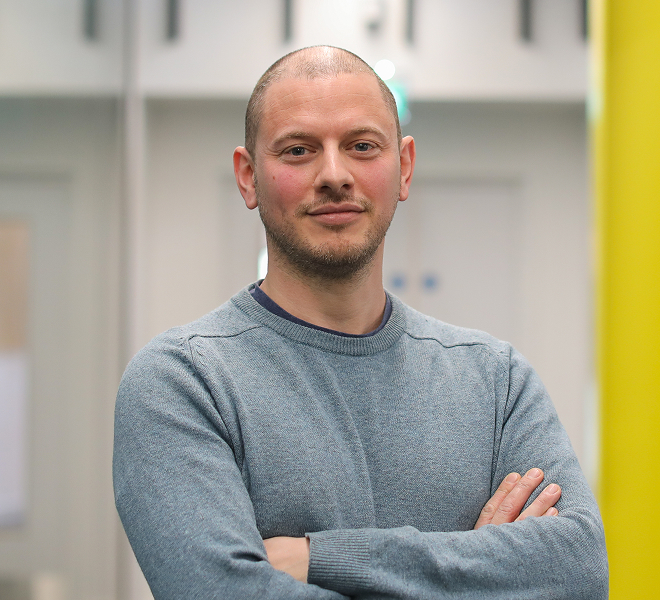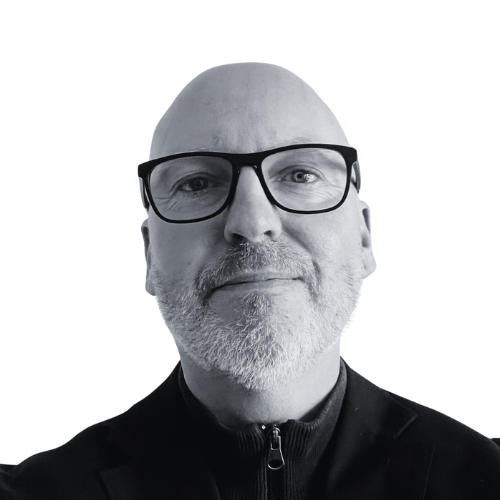Artificial Intelligence
Future Telecoms
Quantum
Future telecoms 2025 to 2026: from faster networks to thinking infrastructure
Reading time: 7 mins
Why Science Creates, the University of Bristol and SETsquared are shaping a new model for deep tech growth
If the UK wants to lead in science and deep tech, it needs more than great universities. It also needs somewhere for ideas to grow into companies that can scale. That’s easier said than done. As Lord Vallance, former government chief scientific adviser and now Minister of State for Science, Research and Innovation, warned last year, “too many companies are either stalling or being bought up and moved overseas. We need to stop that. That means better access to capital. But it also means better infrastructure for deep tech to grow.”
For Science Creates, a deep tech start-up hub based in Bristol, that challenge is precisely what it’s spent the last decade trying to address. And now, with its most ambitious project to date – a new, multi-million pound expansion called OMX, due to open in early 2026 – it’s betting that its founder-led model could serve as a blueprint for UK-wide innovation infrastructure.
OMX represents a step up, not just in size, but in ambition. Currently under construction in Bristol’s Temple Quarter innovation district, the new facility will significantly expand lab capacity for science-based start-ups, particularly in areas like biotech, quantum, and engineering biology. Designed with direct input from its future users, OMX will house high-specification laboratories across multiple floors, something rarely attempted in urban retrofit spaces, and aims to provide the infrastructure needed to help deep tech ventures scale without leaving the region. It’s a statement of intent, not just for Bristol, but for how the UK might build the physical foundations of its science superpower ambition.

“Too often, science parks are property-first,” says Patrick Fallon, head of developments at Science Creates. “We’re founder-led, science-space first and a real estate business second.”
That distinction is more than philosophy. Science Creates’ buildings (OMX will be its third) are tailored to meet the real-world needs of start-ups across disciplines, from microfluidics to advanced materials. Unlike single-focus innovation centres or rigid sector clusters, it remains sector-agnostic but with clear priorities.
“We’re not trying to be everything to everyone,” says Dr Ashley Brewer, head of incubators at Science Creates, “but we are open across a breadth of sectors where we know we add value.”
So what will OMX actually offer? Beyond increasing capacity, the building is being shaped by the specific demands of science-based start-ups, such as multi-storey containment-level labs, space for automation workflows, and GMP-compatible infrastructure (facilities that meet Good Manufacturing Practice standards), all rare to find outside of corporate R&D campuses. That level of design specificity helps start-ups avoid a common trap – hitting a growth ceiling, then stalling while they search for new premises or retrofit their own.
Start-ups involved in the design process have already earmarked space.
“We’ve worked closely with our community,” says Brewer. “For some of them, being able to stay, expand, and stay focused on R&D is the difference between success and stalling.”

OMX aims to make scale-up seamless, not disruptive, part of the same continuum of support that began at Science Creates’ earlier sites.
That continuum extends well beyond real estate. Science Creates also operates its own venture capital arm, SCVC, focused specifically on deep tech and science-based businesses. Several resident companies have raised pre-seed and seed funding through the in-house fund, which works in close alignment with the incubator’s mission.
Moreover, while headquartered in Bristol, Science Creates supports companies from across the UK. Many of its resident start-ups have attracted talent and leadership from other regions, including Cambridge, Oxford, London, and even overseas. For founders, the quality of the infrastructure and the ecosystem around it are often reason enough to relocate.
One of the clearest examples of its support in action is GenomeKey, a diagnostics company developing what it believes could be the world’s first fully automated, high-throughput isolate sequencing pipeline (a tool designed to radically accelerate the diagnosis and treatment of sepsis).
Founded by Michael Roberts, GenomeKey began life as a pre-seed start-up with complex lab requirements and limited resources. Finding affordable, functional lab space that could support its R&D wasn’t just a challenge, it was a potential deal-breaker.
“It would be false to say that we’d be doing this diagnostic mission if all the pieces of the puzzle hadn’t fallen into place. Science Creates being one of those,” says Roberts. “We’re looking at a 10-year, £100-million mission. Lab space is critical but it’s also about culture, support and flexibility.”
Today, GenomeKey operates across three labs in Science Creates’ Old Market site and is preparing to scale further. As the company grows, automation is central to its strategy, not headcount.
“We asked for space to spin up a lab for high-throughput automated sequencing,” Roberts says. “Ashley [Brewer] said, ‘I’ve got one. I’ll hold it for a month.’ That kind of access is essential to our ability to grow.”
Science Creates also operates its own venture capital arm, SCVC, focused specifically on deep tech and science-based businesses.
For Roberts, the design of the space isn’t just functional, it’s strategic. “It’s clean, comfortable, visually impressive and that helps with staff retention and impressing investors. Even royalty was impressed when they visited us,” he says, referring to a visit from the Duchess of Edinburgh earlier this year.
Science Creates does not operate in a vacuum either. Its strength lies in its alignment with the University of Bristol, its collaboration with SETsquared, and its connection to national funding bodies like Research England.
“SETsquared gave us structured and informal support early on,” says Roberts, “and Science Creates delivered the infrastructure and community we needed to grow.”
This trio of lab space, university research, and scale-up support is what gives the model national appeal and relevance. With so many UK start-ups struggling to commercialise academic research or raise patient capital for hardware-intensive innovation, Bristol’s ‘full stack’ approach to deep tech support is beginning to look like a roadmap.
It’s no coincidence that Harry Destecroix, Science Creates’ founder and a successful biotech entrepreneur himself, now advises the Department for Science, Innovation and Technology. In a LinkedIn post marking ten years since the idea for Science Creates began, Destecroix wrote:
“Ten years ago, we were just a group of scientists with an idea and no lab to work in. That struggle to find space, support, and people who understood what we were trying to build is what led to Science Creates. It wasn’t just about creating labs; it was about creating the conditions for Deep Tech to thrive. I’m proud of what we’ve built.”
That idea of constant iteration comes up repeatedly in conversations with Brewer and Fallon.
“We’ve come from a bottom-up approach,” says Brewer. “We don’t pretend to have all the answers. Needs evolve. So we adapt our services and infrastructure around feedback.”
It’s a striking contrast to some more centralised innovation strategies.
“A lot of decision making is based on really bad data,” says Fallon, pointing to national spinout figures. “But we’re on the ground. We see what’s working and what’s not. And we’re trying to feed that understanding back up.”
With OMX opening next year and over 75,000 square feet of innovation space already in use, Science Creates has hit critical mass. Its long-term target? One million square feet under management by 2033. But it’s not just about size.
“Our vision is to grow this platform so it can help address the UK’s lag in translational research,” Fallon says. “There are so many great ideas in research groups but very few become companies. We want to change that.”
Bristol now has a working prototype of how public research, private ambition, and regional support can come together to build companies with global potential. OMX is the next step. The blueprint, many argue, is already here.

Working as a technology journalist and writer since 1989, Marc has written for a wide range of titles on technology, business, education, politics and sustainability, with work appearing in The Guardian, The Register, New Statesman, Computer Weekly and many more.
Quantum
Reading time: 10 mins
Quantum
Reading time: 10 mins
Quantum
Reading time: 11 mins
Robotics
Reading time: 1 mins
Quantum
Reading time: 3 mins